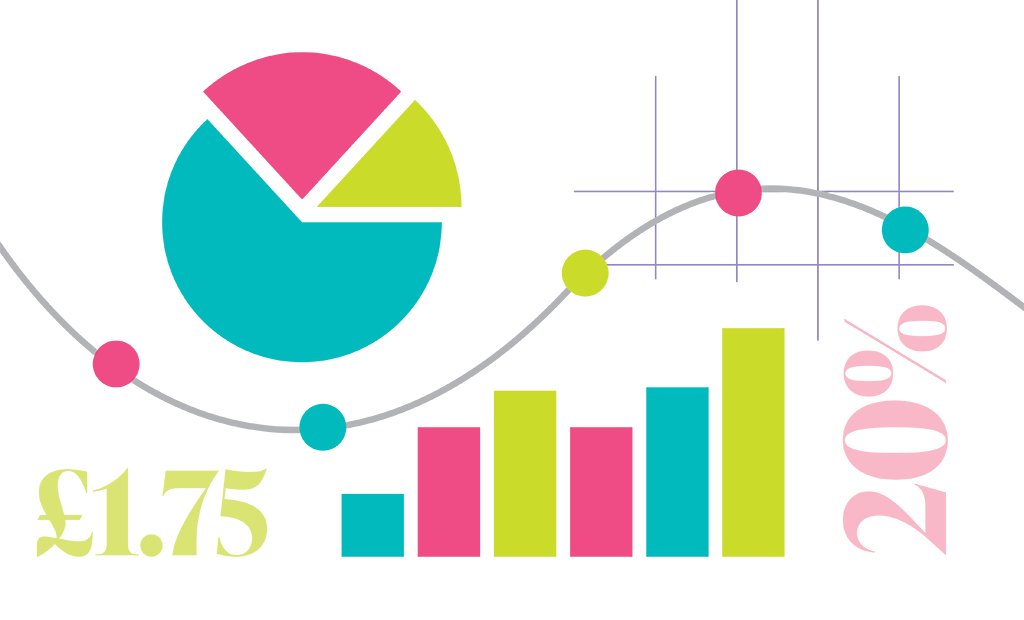Megan Wybrew, trustee of the Friends of Torridon Primary School PTA (650 pupils) in south east London, recalls how a typical planning discussion would go when she first joined the PTA:
‘How many burgers do you think should we order?’
‘I don’t know. How many did they get last time?’
‘Steve thinks it was about 200.’
‘Was that enough?’
‘I think they sold out, but I don’t know how close to the end of the day it was.’
‘I thought they had loads left over.’
‘Does anyone know how many we should we get this year?’
Everyone shrugs.
‘My professional background is in the charity sector, where monitoring and evaluation are a natural part of the job,’ says Megan. ‘I’ve brought this ethos into my role on the PTA. I always make a point to record as much data as I can, including hard figures, such as quantities of supplies we purchase and use at events, plus softer details, such as observations about what worked well or didn’t.’ She adds that this combination helps the PTA evaluate the success of events and measure the volunteer time invested in generating profits.
Data may not be everyone’s favourite topic, but we live in a data-driven world. As supporters’ earnings struggle to keep up with the rising cost of living, it has become increasingly difficult for PTAs and schools to attract donations. Moreover, every purchase is more costly. Data is easily available and tracking the metrics can help identify areas for improvement.
PTAs can put their numbers to work in two ways: internally, as information for the committee and for event planning, and externally, to communicate with supporters and the wider community. Maybe you already use data as part of a stock check, to record expenses or calculate proceeds; perhaps you make posters and social media graphics that use numbers to demonstrate impact. Collecting, collating and evaluating this data can save you time and money, and boost profits.
Value the hours
Elizabeth Cook, charity trustee at Milton Primary School in Cambridge (320 pupils) and committee member at Milton School Association says it’s no longer acceptable to think that it doesn’t matter what we make, as long as we make something.
‘In the past, PTAs were based on unpaid and unrecognised labour, mostly that of women. But we need to move forward to a position in which this labour is valued and appreciated. We are in the 21st century, and the idea that our labour has no economic value is old fashioned,’ she adds.
In PTA life, nothing happens if people don’t give their time. ‘Once you have volunteers, you have to treat their time as extremely valuable,’ says Elizabeth, who explains that her own experiences made her look at the metrics. ‘To save money, I went to a shop that was further away, but it took me half an hour to get there and half an hour to get back plus the shopping time. In the end I saved £7, but that’s ridiculous. I could have gone to work and earned more than that and donated it to the PTA. When spending volunteer time in this way, we price it at £10 an hour.’
An easy win is to calculate the ratio of volunteer time to profit on the stalls at your fairs. If someone works for three hours and raises £20, ask yourself: is it a good use of their time? Elizabeth notes: ‘My personal metric here is that we should be making at least five pounds per hour of volunteer time. This tracks for big events, such as fireworks night, but also for the smaller events too. If anything makes more than that, it’s a star event.’
‘Our best investment has been a pillory,’ she continues, ‘It’s also an activity that can be easily broken down: how much did the pillory cost? How much does it cost to throw a sponge? How many pupils can take a turn in a two-hour event? I tell people my greatest success was hitting the headteacher in the face with a wet sponge.’
A uniform policy
The Friends of St Gregory’s Catholic Primary School in Chorley (218 pupils) have run a pre-loved uniform shop for the past five years and began collecting data two years ago. Kate Witkiss, chair of the Friends says: ‘We use PTA Events to sell most of our uniform, which enables us to track how much of each item we sell.’ This information helps the Friends set prices and understand which items are popular, and it’s rewarding for them to watch the sales increase year on year. They also share the metrics in a visual form, by creating an infographic that shows supporters how buying pre-loved uniform saves them money as well as reducing landfill.
Make a resolution
Start keeping records of your stock, purchases, costs, profits and volunteer time. ‘The data from our 2023 fair has definitely guided our purchasing decisions for 2024 and made planning considerably easier,’ says Megan Wybrew. ‘Having clear and accessible records reduces the amount of guesswork in event planning and bolsters our confidence. We now have a template in the form of a collaborative spreadsheet stored on Google Drive, meaning we no longer have to trawl through our email archive or rely on hazy recollections. More importantly, it has empowered a new, much larger team of volunteers.’







